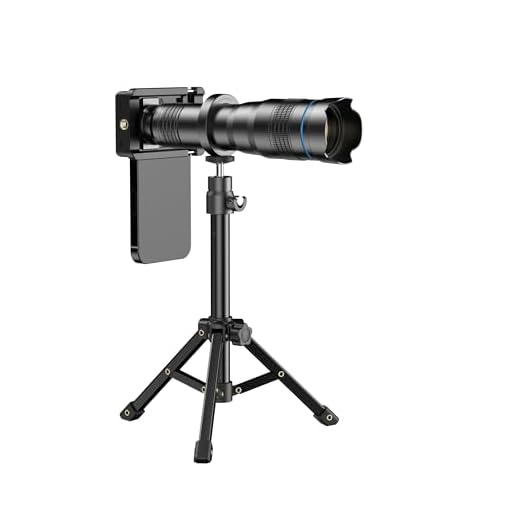




When it comes to smartphone photography, the debate between iPhone and Android users is never-ending. However, one undeniable fact is that the iPhone camera consistently outperforms its Android counterparts in various aspects.
One of the key reasons for the superiority of the iPhone camera is the seamless integration of hardware and software by Apple. The optimization of the camera sensor, image processing algorithms, and iOS ecosystem results in stunning image quality and color accuracy that is hard to match.
Additionally, the advanced computational photography features found in iPhones, such as Smart HDR, Night mode, and Deep Fusion, elevate the photography experience and allow users to capture incredible shots in challenging lighting conditions.
While Android devices have made significant improvements in camera technology over the years, the overall user experience and image quality offered by the iPhone camera continue to set it apart as the preferred choice for many photography enthusiasts.
Benefits of iPhone Camera over Android
1. Image Quality: The iPhone camera is known for its exceptional image quality, producing sharp and vibrant photos with accurate colors.
2. Low Light Performance: iPhones typically perform better in low-light conditions, capturing clearer and less noisy photos compared to many Android devices.
3. User-Friendly Interface: The camera app on iPhones is intuitive and easy to use, allowing users to quickly access and adjust settings for better photography.
4. Software Optimization: Apple’s software optimization ensures that the camera hardware works seamlessly with the operating system, resulting in smooth and consistent performance.
5. Regular Updates: iPhones receive regular software updates that often include improvements to the camera app and its features, ensuring users benefit from the latest advancements in photography technology.
Superior Image Quality
One of the key advantages of the iPhone camera over Android is its superior image quality. Apple’s advanced image processing algorithms and hardware optimization result in sharper, more vibrant photos with better color accuracy and dynamic range.
The iPhone’s camera sensors are also known for capturing more details in low-light conditions, producing less noise and better overall image clarity compared to many Android devices. This superior image quality makes the iPhone a popular choice for professional photographers and casual users alike.
Advanced Camera Features
One of the key advantages of the iPhone camera over Android is the advanced camera features it offers. With features like Smart HDR, Night mode, Deep Fusion, and Portrait mode, iPhone cameras deliver stunning photos in various lighting conditions.
Smart HDR on iPhone enhances details in both the shadows and highlights of your photos, creating more balanced and lifelike images. Night mode allows you to capture clear and bright photos even in low-light settings, while Deep Fusion technology combines multiple images to produce a highly detailed final photo.
Additionally, the Portrait mode on iPhone uses advanced depth-sensing technology to create professional-looking portraits with beautifully blurred backgrounds. These advanced camera features make iPhone a top choice for photography enthusiasts and casual users alike.
Consistent Performance
One of the key advantages of the iPhone camera over many Android devices is its consistent performance. Apple designs both the hardware and software for its devices, allowing for seamless integration and optimization. This results in a camera that consistently delivers high-quality images and videos, even in challenging lighting conditions.
Additionally, Apple’s regular software updates ensure that the camera performance continues to improve over time, with new features and enhancements being added with each update. This level of consistency and reliability is a major selling point for iPhone users who rely on their device’s camera for capturing important moments.
Seamless Integration with iOS
One of the major advantages of the iPhone camera is its seamless integration with the iOS operating system. Apple’s tight control over both the hardware and software allows for optimized performance and features that are specifically tailored to work together harmoniously.
Users benefit from the built-in camera app, which offers a user-friendly interface and a wide range of shooting modes and editing tools. The integration with iCloud also makes it easy to store and access photos across all Apple devices.
Additionally, the iPhone camera works seamlessly with other iOS apps, allowing for quick and efficient sharing of photos and videos on social media platforms or messaging apps. This level of integration enhances the overall user experience and sets the iPhone camera apart from its Android counterparts.
Enhanced Low Light Photography
One of the key areas where iPhone camera excels compared to Android is in low light photography. The latest iPhone models come equipped with advanced sensors and image processing algorithms that allow them to capture stunning photos even in dimly lit environments.
Apple’s Night mode feature further enhances the low light performance of the iPhone camera by intelligently adjusting settings to brighten up dark scenes without introducing noise or sacrificing detail. This results in sharper, more vibrant images that rival those captured by professional cameras.
Smart HDR Technology
Another advantage of the iPhone camera is its Smart HDR technology, which intelligently combines multiple exposures to create a single high-quality image with improved dynamic range and detail. This technology ensures that both highlights and shadows are well-balanced, resulting in more natural-looking photos in all lighting conditions.
Deep Fusion
Deep Fusion is another feature exclusive to iPhone cameras that leverages machine learning to enhance texture, detail, and noise reduction in photos. By analyzing multiple frames pixel by pixel, Deep Fusion produces images with unparalleled sharpness and clarity, making it a valuable tool for capturing intricate details in low light situations.
Easier Access to Camera Settings
One of the advantages of the iPhone camera is the ease of access to camera settings. The iOS camera app is designed to be user-friendly and intuitive, making it easy for users to adjust settings such as exposure, focus, and white balance with just a few taps.
On the other hand, Android camera apps can vary significantly depending on the manufacturer and model of the device, leading to a lack of consistency in the user experience. Some Android camera apps may bury important settings deep within menus, making it more challenging for users to customize their photography settings.
Overall, the iPhone camera offers a more streamlined and accessible approach to adjusting camera settings, making it easier for users to capture the perfect shot without having to navigate through complex menus.
Faster Autofocus and Shutter Speed
One of the key advantages of iPhone cameras over Android cameras is their faster autofocus and shutter speed. iPhones typically have advanced autofocus technology that allows them to quickly and accurately focus on subjects, resulting in sharper images. This is especially useful when capturing fast-moving subjects or in low-light conditions where quick autofocus is essential.
In addition, iPhones often have faster shutter speeds compared to many Android devices. A faster shutter speed means that the camera can capture images quickly, reducing the likelihood of motion blur in photos. This is particularly beneficial for capturing action shots or photos in challenging lighting situations.
Overall, the combination of faster autofocus and shutter speed in iPhone cameras helps deliver superior image quality and ensures that you can capture the perfect shot in any situation.
Effortless Editing and Sharing Options
One of the key advantages of the iPhone camera over Android is the seamless integration with the iOS ecosystem, providing users with effortless editing and sharing options. The built-in Photos app on the iPhone offers a variety of editing tools such as filters, cropping, and adjustments to enhance your photos with just a few taps.
Additionally, iPhone users can easily share their edited photos directly to social media platforms or messaging apps without having to download third-party apps. The AirDrop feature allows for quick and easy sharing of photos with other Apple devices nearby, making it convenient to share high-quality images with friends and family.
While Android devices also offer editing and sharing options through various apps, the iOS ecosystem provides a more streamlined and user-friendly experience, making it easier for users to edit and share their photos effortlessly.
Optimal Color Accuracy
One area where iPhone cameras excel compared to Android is color accuracy. Apple’s iPhones are known for producing photos with more true-to-life colors, thanks to their advanced image processing algorithms. The colors captured by an iPhone camera are often more vibrant and accurate, making photos look more natural and appealing.
Advanced Color Science
Apple invests heavily in color science technology, ensuring that the colors captured by iPhone cameras are as accurate as possible. This attention to detail results in photos that accurately represent the scene being photographed, with colors that pop without being oversaturated.
- iPhone cameras have a wider color gamut, capturing a greater range of colors.
- Apple’s software algorithms adjust colors to ensure accurate representation.
- The True Tone display on iPhones helps users see colors more accurately.
Reliable Image Stabilization Technology
One of the key advantages of the iPhone camera over Android devices is its reliable image stabilization technology. Apple has consistently focused on improving the quality of images and videos captured on their devices, and image stabilization plays a crucial role in achieving sharp, clear photos and smooth videos.
The iPhone camera uses advanced optical image stabilization (OIS) and electronic image stabilization (EIS) technologies to reduce the impact of camera shake and motion blur. This results in sharper images, especially in low-light conditions or when capturing fast-moving subjects.
Compared to many Android devices that rely solely on digital image stabilization, the iPhone’s combination of OIS and EIS delivers superior results, making it a preferred choice for users who value image quality and stability in their photography and videography.






